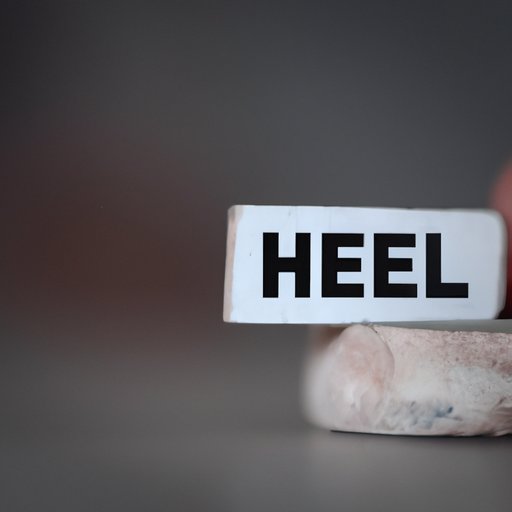
Introduction
Phlegm is a thick, sticky substance produced by the respiratory system that can be difficult to get rid of. While it’s a natural defense mechanism to protect the lungs from irritants, excessive phlegm can be uncomfortable and even interfere with breathing. Fortunately, there are natural remedies, lifestyle changes, and techniques that can help alleviate phlegm.
Natural Remedies for Phlegm: Home Remedies to Help Clear Your Airways
Certain foods and drinks can help reduce the amount of phlegm in your system. Ginger, honey, and warm liquids such as tea or chicken soup are all known to be effective. In addition, steam inhalation can soothe the airways and loosen phlegm, while gargling with warm salt water can help relieve throat irritation. Other natural remedies that can help include eucalyptus oil, apple cider vinegar, and turmeric.
Lifestyle Changes That Help Get Rid of Phlegm
Staying hydrated is crucial to keeping phlegm thin and easier to expel from the body. Drinking plenty of water and other fluids, such as herbal tea and warm broths, can help keep your body hydrated. It’s also important to avoid irritants such as smoke and pollution, which can exacerbate phlegm production. Using a humidifier in your home or workplace can also help to keep the air moist and reduce phlegm buildup. Another effective lifestyle change is nasal irrigation, which can help clear out blocked nasal passages and promote better breathing.
5 Effective Techniques to Clear Phlegm from Your Throat
There are several techniques that can help clear phlegm from your throat. These include coughing, deep breathing, and postural drainage. To cough effectively, take a deep breath before coughing to build up enough pressure to dislodge the phlegm. Deep breathing exercises can also help to strengthen your respiratory muscles and improve your lung capacity. Postural drainage, or positioning your body to help drain phlegm from your lungs, can be effective but should be performed under the guidance of a healthcare professional. Other techniques that may be helpful include huffing and suctioning.
Say Goodbye to Phlegm: Tips from a Doctor
A medical professional can offer valuable insights into how to get rid of phlegm. They may recommend medication to reduce inflammation and mucus production or prescribe antibiotics to treat an underlying infection. In addition, they may provide tips on how to manage conditions such as asthma or chronic obstructive pulmonary disease (COPD) that can contribute to phlegm buildup. Other tips may include increasing physical activity to improve lung function and quitting smoking.
Yoga and Breathing Exercises for Phlegm Relief
Yoga and breathing exercises can also help alleviate phlegm. Certain poses, such as the Cat-Cow Stretch, can help to stimulate the lungs and promote deep breathing. Other poses that can be effective include the Cobra Pose and the Bridge Pose. In addition, breathing exercises such as the Kapalabhati and Bhastrika techniques can help to strengthen the respiratory system and reduce phlegm production.
Conclusion
Getting rid of phlegm often requires a combination of approaches, including natural remedies, lifestyle changes, and techniques. While it can be frustrating, it’s important to be patient and consistent in your efforts. By incorporating some of the tips and techniques discussed in this article, you can reduce phlegm buildup and improve your overall respiratory health.




